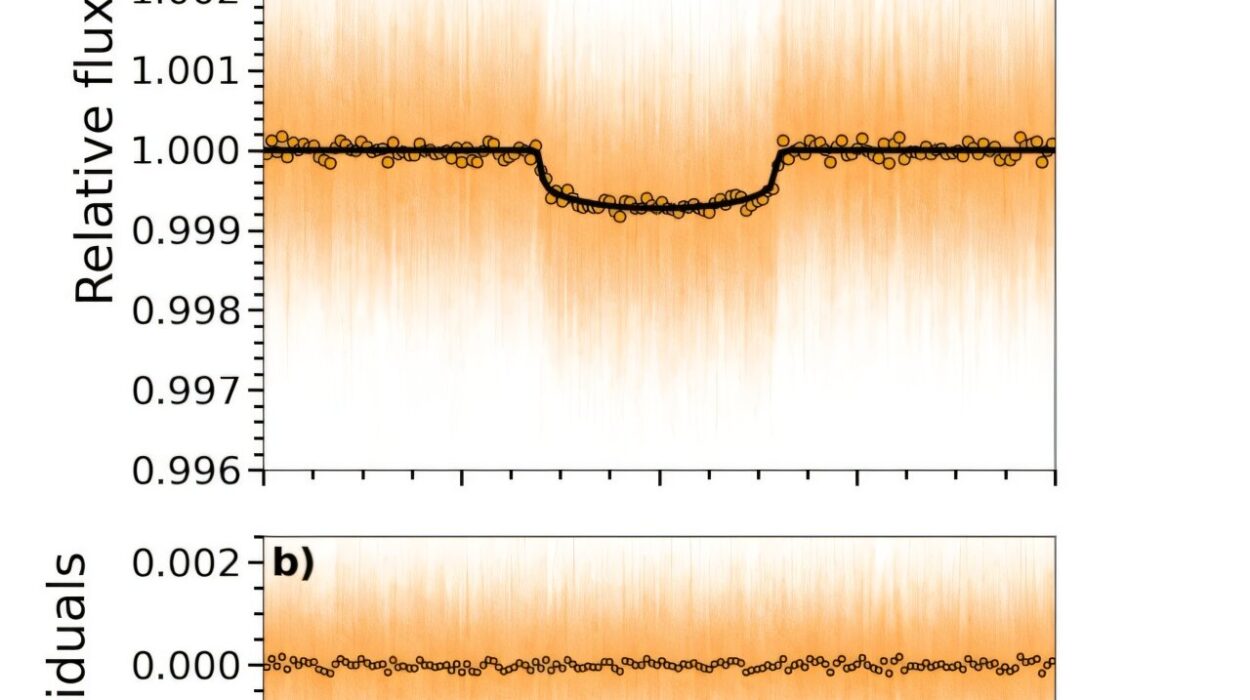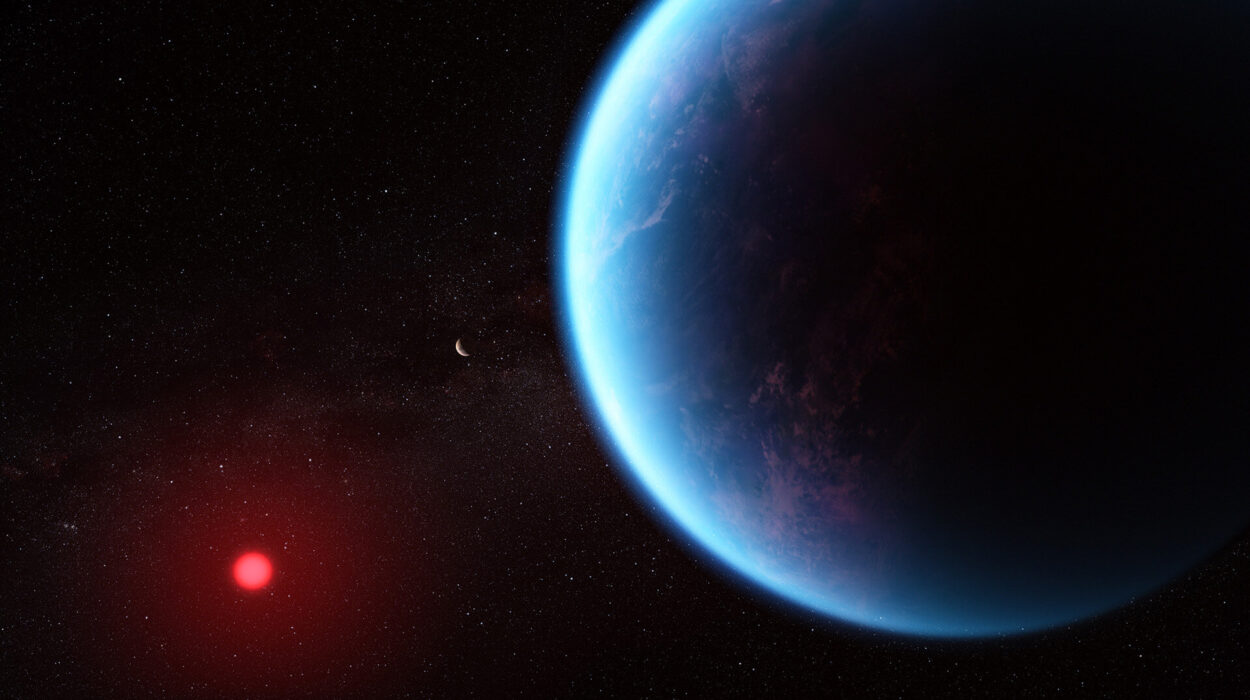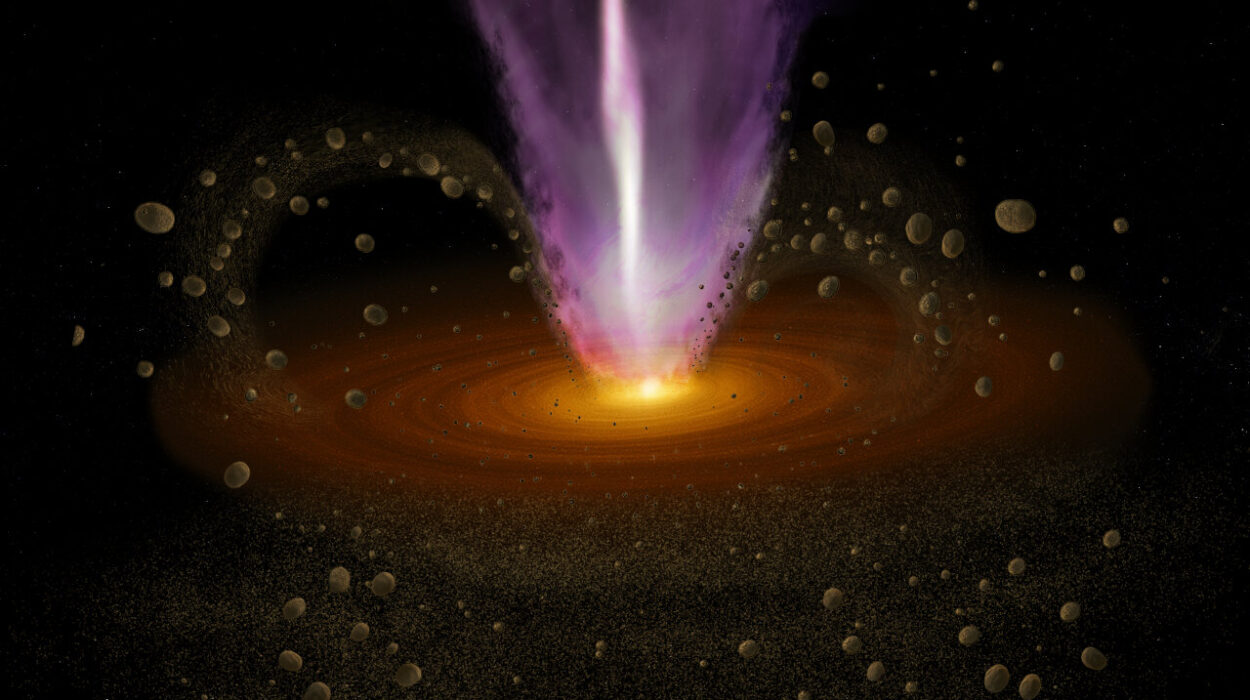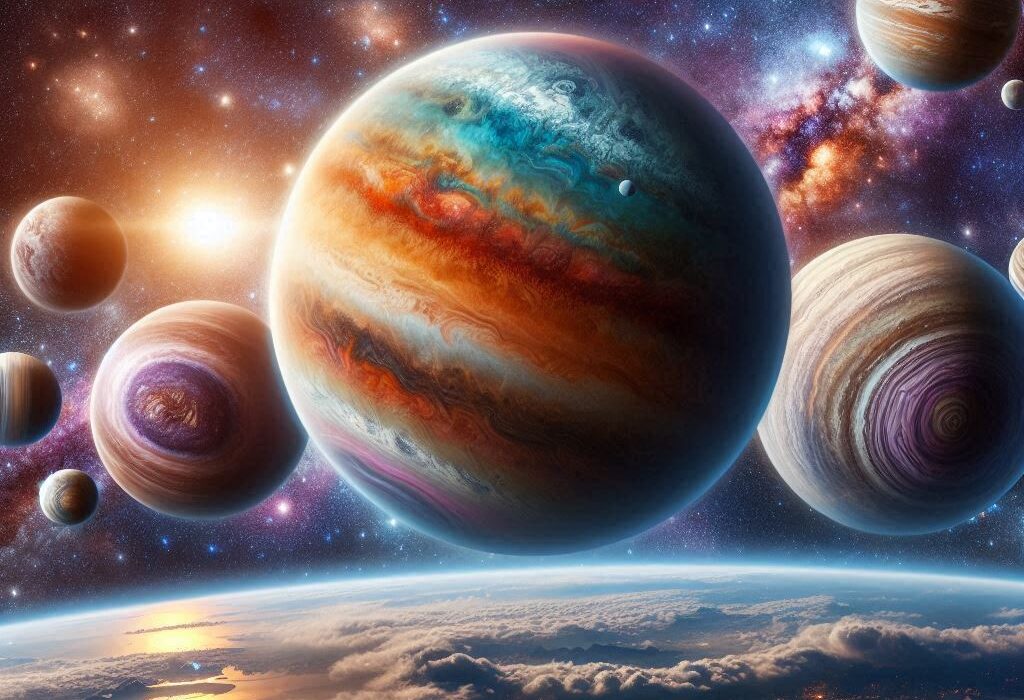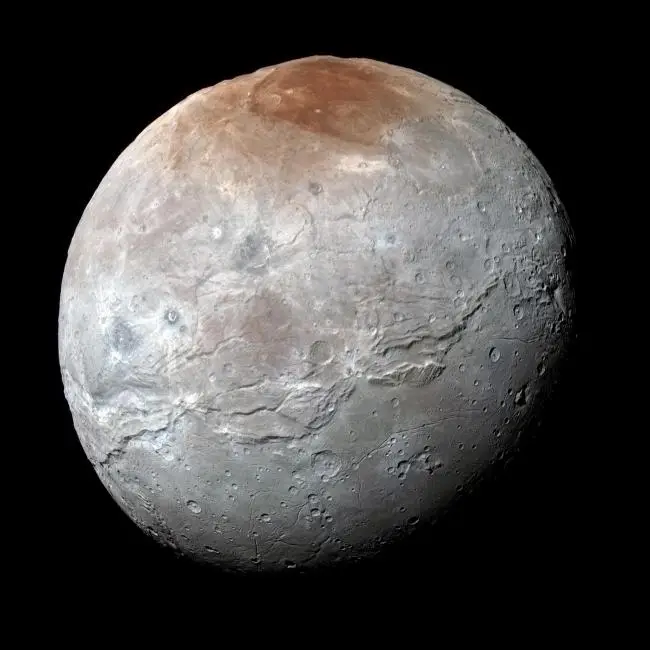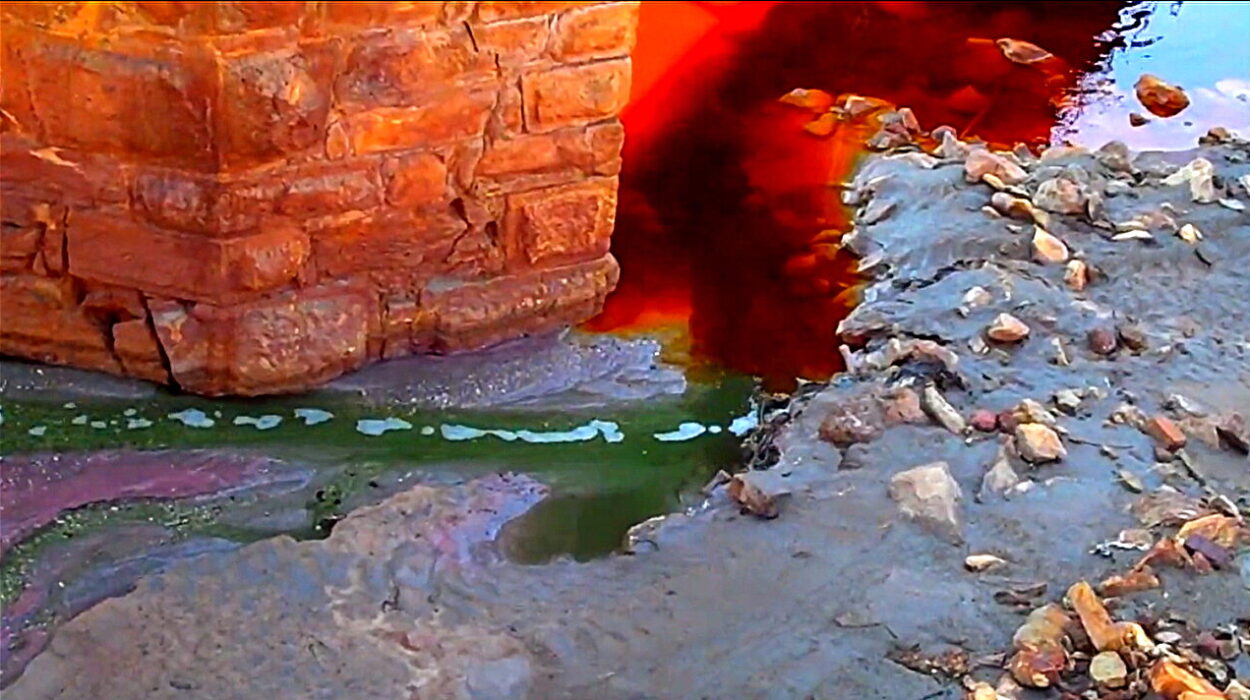When we think of extreme weather, we often imagine the tornadoes that rip across the American Midwest, the blizzards that blanket the Northern Hemisphere, or the scorching heatwaves that scorch deserts. But Earth’s weather, with all its unpredictability and intensity, is just a warm-up compared to what happens elsewhere in the solar system. Our planetary neighbors, moons, and distant worlds are home to weather phenomena far beyond our wildest imaginations. From supersonic winds that can obliterate landscapes to temperatures so cold that even atoms freeze in place, the weather in our solar system is a spectacle that defies human comprehension.
In this journey through the cosmos, we’ll explore the most extreme and otherworldly weather in the solar system — some of it potentially threatening to life, and some that’s just plain awe-inspiring. Let’s venture beyond Earth and see how the weather on other planets and moons shapes the very surfaces and atmospheres they inhabit.
1. The Raging Storms of Jupiter: The Great Red Spot
At the very heart of our solar system lies the gas giant Jupiter, a planet so massive that it could fit over 1,300 Earths inside it. Jupiter’s weather is unlike anything we experience here. The most famous example is the Great Red Spot, a massive storm that has been raging for at least 400 years. This persistent, high-pressure system is an anticyclone that swirls counterclockwise in the planet’s southern hemisphere, and it’s so enormous that it could easily engulf Earth multiple times.
But it’s not just the size of the storm that’s remarkable; it’s the intensity. Winds inside the Great Red Spot can reach speeds of up to 432 kilometers per hour (about 270 miles per hour). These winds would be catastrophic if they occurred on Earth, but they’re just part of the natural weather on Jupiter. The storm itself is roughly 16,000 kilometers (10,000 miles) wide, which means it could easily swallow our entire planet. It has been observed to shrink over time, but scientists still don’t know exactly why or what this means for the planet’s weather patterns.
Beyond the Great Red Spot, Jupiter’s entire atmosphere is a cauldron of chaotic storms, lightning, and massive cloud systems. The gas giant is bombarded with lightning bolts that are up to 1,000 times more powerful than those on Earth. The planet’s atmosphere is primarily composed of hydrogen and helium, with traces of ammonia and methane. These gases create the dramatic cloud patterns seen in images of Jupiter. Scientists have also detected swirling cyclones near the poles of Jupiter, where clouds whip around in seemingly endless circles, creating some of the most violent weather in the solar system.
2. The Winds of Venus: Hellish Gales and Acidic Clouds
Venus, often called Earth’s “sister planet,” is similar in size and composition to Earth, but its weather is anything but hospitable. The planet’s atmosphere is thick with carbon dioxide, trapping heat in a runaway greenhouse effect that makes Venus the hottest planet in the solar system, with surface temperatures around 465°C (869°F), which is hotter than Mercury, even though Venus is farther from the Sun.
But it’s not just the heat that makes Venus’s weather extreme — it’s the winds. The winds on Venus reach speeds of up to 360 kilometers per hour (224 miles per hour), almost equivalent to the winds of a Category 5 hurricane on Earth. These winds are driven by the planet’s extreme heat and a phenomenon called “super-rotation,” where the atmosphere circulates much faster than the planet itself. A full rotation of Venus takes 243 Earth days, but its winds can circle the planet in just four Earth days. This super-rotation is so powerful that it can whip clouds of sulfuric acid around the planet at speeds that would tear apart any spacecraft unlucky enough to be caught in the storm.
The clouds themselves are no less extreme. They are made of thick layers of sulfuric acid, making Venus’s atmosphere highly corrosive. The planet’s surface is obscured by these clouds, which trap the heat beneath, creating a permanent, oppressive layer of clouds. Venus’s weather is so extreme that it is often likened to an inferno, a hellish world where nothing could survive.
3. The Icy Winds of Uranus: A Tilted World with Extreme Seasons
Uranus, the icy giant, is known for its extreme tilt — it rotates on its side at an angle of 98 degrees, which means that its poles are almost in the plane of its orbit. This unique orientation leads to some of the most extreme seasons in the solar system. Each of Uranus’s poles experiences 42 years of continuous sunlight, followed by 42 years of darkness, due to the planet’s tilted axis.
But perhaps the most fascinating aspect of Uranus’s weather is its winds. Despite the planet’s freezing temperatures, which hover around -224°C (-371°F), Uranus experiences wind speeds of up to 900 kilometers per hour (560 miles per hour). These winds are some of the fastest in the solar system and are driven by internal heat from the planet’s core. Unlike Jupiter and Saturn, Uranus doesn’t generate much heat from the Sun, but instead, it releases more energy than it receives, suggesting there’s some internal heating mechanism at work. This could explain the high wind speeds and the planet’s unique weather patterns.
Uranus’s weather is also characterized by large storms and dynamic cloud structures. These clouds are made of methane ice and ammonia, and the planet’s dark atmosphere is peppered with occasional bright spots that could be large storms or lightning flashes. However, because of Uranus’s distance from Earth, it’s difficult for scientists to study these phenomena in great detail, leaving many questions about the planet’s weather still unanswered.
4. The Dust Storms of Mars: Planetary Tempests
Mars, the Red Planet, is famous for its dusty, dry surface and the many features that suggest it once had liquid water. But despite its thin atmosphere, Mars experiences some of the most intense dust storms in the solar system. These storms can cover the entire planet, lasting for weeks or even months, and they have the power to drastically alter the planet’s weather patterns.
The most extreme dust storms on Mars are capable of increasing the temperature of the atmosphere by as much as 10°C (18°F), though the surface temperature remains frigid. The dust particles in the atmosphere absorb sunlight, warming the air above and creating a kind of localized greenhouse effect. These dust storms are not only a fascinating meteorological phenomenon, but they also affect the planet’s surface, blocking sunlight from reaching the surface and causing dust to accumulate in different regions.
What makes Mars’s dust storms so extreme is their unpredictability and sheer scale. In 2018, a dust storm encircled the entire planet, leading to the temporary shutdown of NASA’s Opportunity rover after it lost power. The rover was unable to charge its batteries due to the reduced sunlight caused by the dust particles. These storms also contribute to the planet’s enigmatic weather by redistributing dust and sand across the surface, shaping the landscape in ways that are still not fully understood.
5. Saturn’s Hyper-Violent Storms and Hexagonal Cloud Patterns
Saturn, another gas giant, is home to some of the most visually striking weather in the solar system. Its iconic hexagonal cloud pattern at the north pole has baffled scientists for decades. The six-sided jet stream system is a product of high-speed winds swirling around Saturn’s polar region. These winds can reach speeds of up to 1,800 kilometers per hour (1,100 miles per hour), far surpassing anything Earth has experienced.
But it’s not just the strange hexagonal clouds that make Saturn’s weather extreme. The planet experiences massive storms, some of which can be seen from space. These storms often last for months, whipping through Saturn’s atmosphere with winds that can be several times faster than Earth’s most intense hurricanes. In 2011, scientists observed a massive storm on Saturn that was so large it could have engulfed Earth completely.
The storm unleashed an enormous amount of energy, with lightning strikes that were more powerful than anything ever recorded on Earth. The intense electrical activity within Saturn’s clouds creates lightning bolts that can be tens of times more powerful than those on Earth, causing immense atmospheric disturbances.
6. The Snowstorms of Neptune: Winds of the Outer Reaches
Neptune, the most distant planet from the Sun, is a world of extremes. Although it is composed largely of hydrogen, helium, and methane, its weather is a puzzle that scientists are still trying to piece together. One of the most extreme weather features of Neptune is its incredibly fast winds, which can reach speeds of over 2,100 kilometers per hour (1,300 miles per hour). These winds make Neptune’s weather the most violent in the solar system.
Neptune’s atmosphere is also home to some of the strangest phenomena in the solar system: snowstorms of methane ice. These methane crystals, which form high in the planet’s atmosphere, descend toward the planet’s surface, creating snowstorms unlike anything seen on Earth. The combination of extreme cold, high winds, and methane snow makes Neptune a world of perpetual storms and unpredictable weather. Even though Neptune is far from the Sun, it still emits more energy than it receives, which is believed to fuel these violent storms.
7. The Frozen World of Titan: Hydrocarbon Rain
Titan, Saturn’s largest moon, is the only moon in the solar system known to have a thick atmosphere. This atmosphere is mostly nitrogen, with traces of methane and other hydrocarbons. Titan’s weather is dominated by cycles of rain, although not water rain, but methane and ethane rain.
The cold temperatures on Titan, which hover around -179°C (-290°F), prevent water from existing in liquid form, but methane can exist as a liquid. Titan’s surface is dotted with vast seas and lakes of liquid methane, and the atmosphere is periodically drenched by rainstorms of this hydrocarbon. The combination of liquid methane, extreme cold, and the thick atmosphere gives Titan weather patterns unlike anything on Earth.
Titan’s weather also includes strong winds, which can stir the atmosphere and create clouds of organic compounds. These clouds sometimes form methane fogs that drift over the moon’s surface, adding to its eerie, alien landscape.
Conclusion: A World of Extremes
From the explosive storms of Jupiter to the icy winds of Uranus, the solar system is home to weather patterns that challenge the limits of our understanding. Each planet and moon offers a unique perspective on how weather systems work under vastly different conditions. Whether it’s the hellish gales of Venus or the frigid methane rain on Titan, the weather beyond Earth provides a window into the complexity and diversity of our solar system.
In a universe full of strange and extreme environments, these celestial bodies demonstrate the incredible variety of weather patterns that can exist. As we continue to explore space, the most extreme weather phenomena in the solar system will undoubtedly continue to captivate our imaginations and deepen our understanding of the forces that shape the worlds around us.

